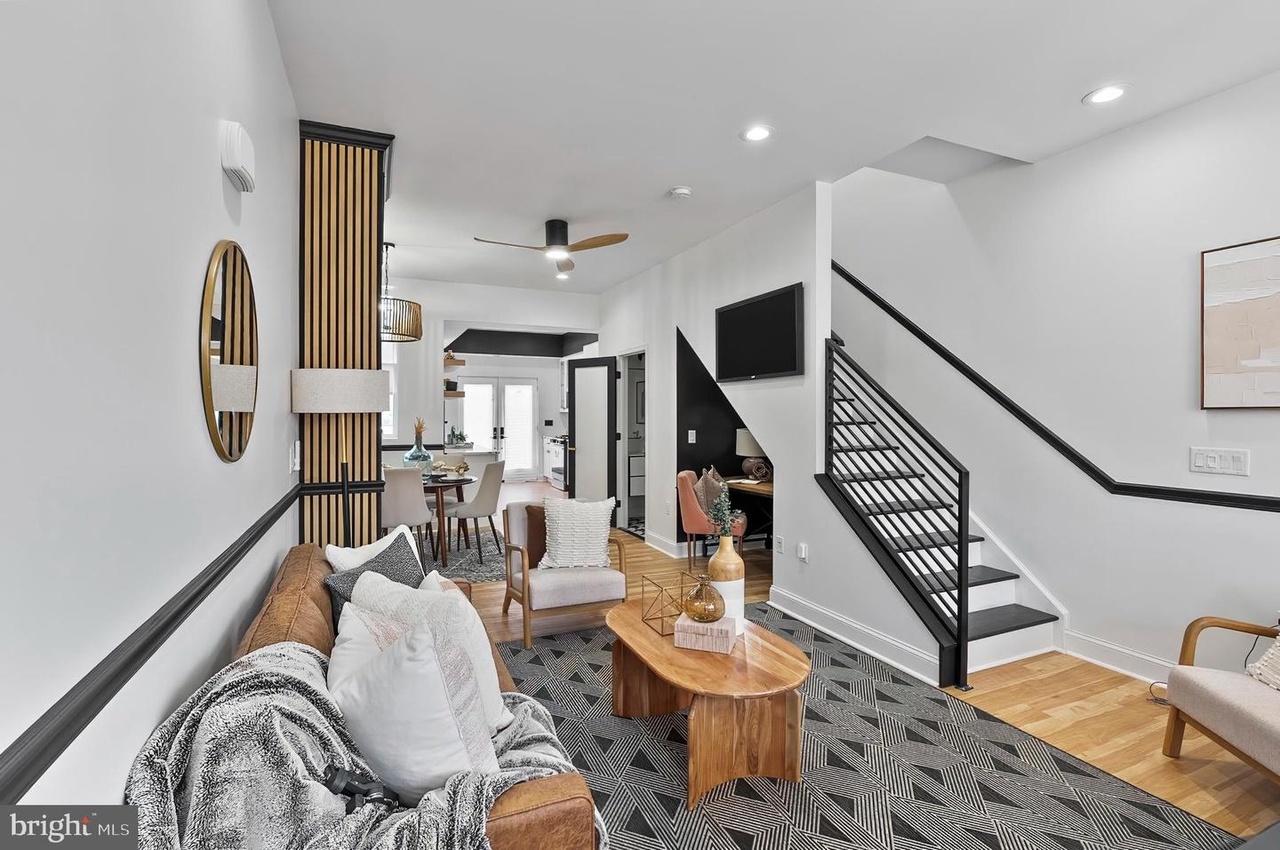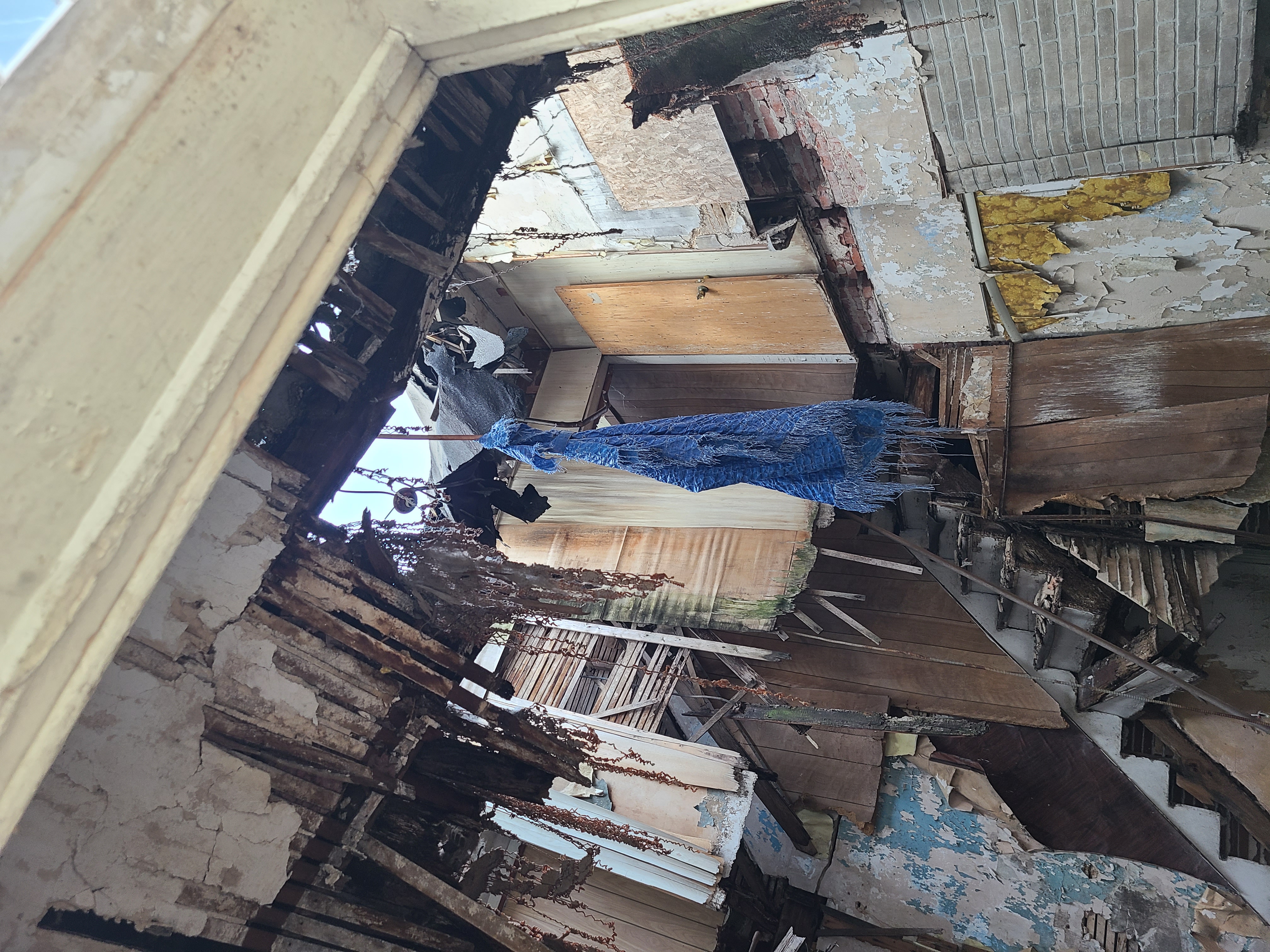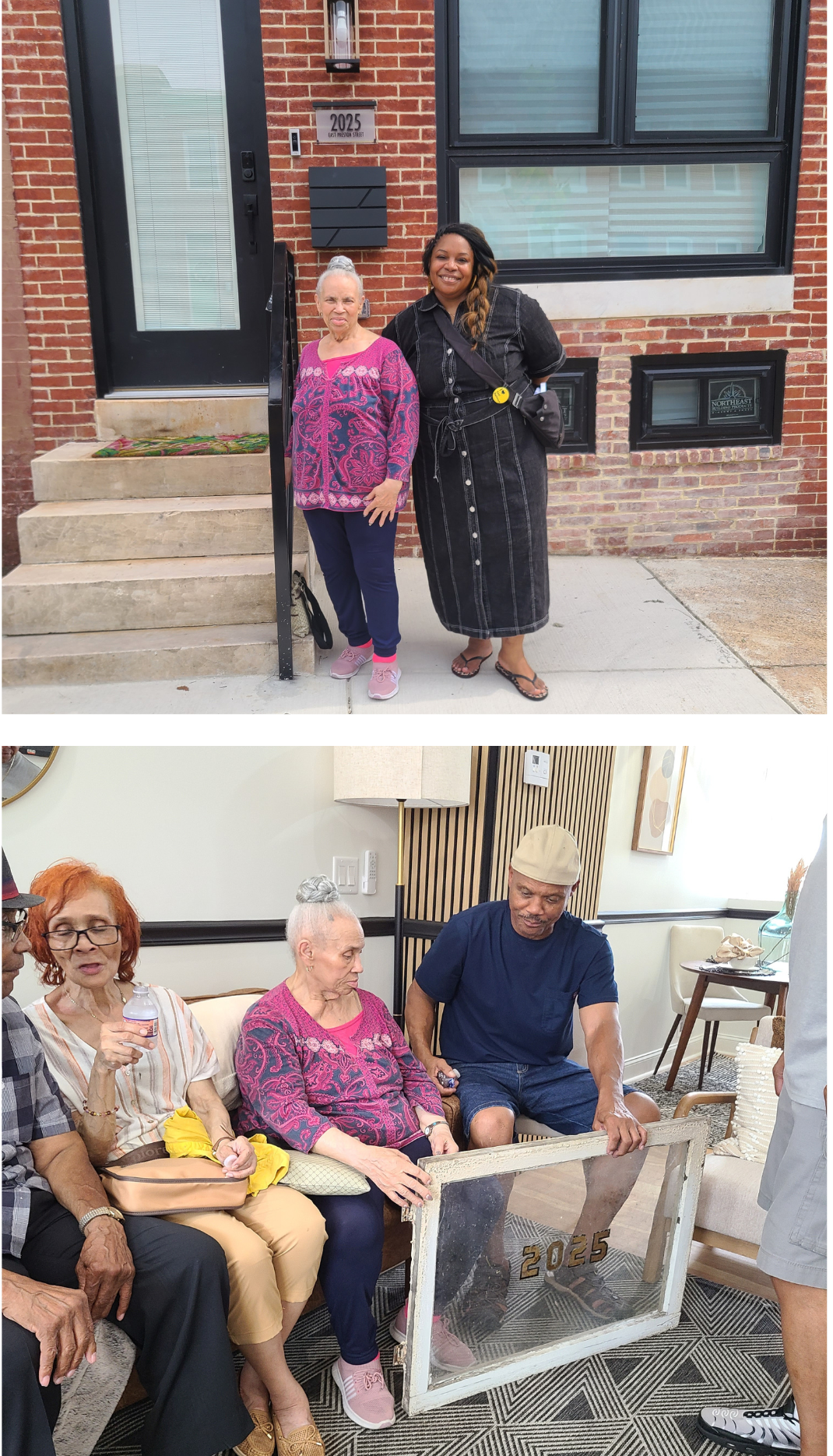
2025 E. Preston Street
Dr. Nichole M. Stewart of Cookie LLC grew up on the 2000 block of E. Preston Street, a friendly, family-oriented area that eventually faced a striking period of disinvestment and high vacancy. Following her rehab of 2025 E. Preston Street, Stewart’s dream of reviving her childhood block is closer than ever with one more vacant building to renovate until it is fully restored.

Stewart remembers the Collington Square area in Baltimore’s Broadway East neighborhood as a tight-knit, economically diverse community with thriving Black-owned corner businesses and zero vacant properties. Both sides of her family lived in the area for decades. Her parents were married in the backyard of her grandparents’ house at 2004 E. Biddle Street, one street over from Preston. The newlyweds purchased their first home at 2037 E. Preston Street in 1980, the home where Stewart grew up. But when Stewart was in high school, the neighborhood saw a shift. “The first time I had an understanding of what disinvestment in neighborhoods [looked like] was when the mailbox that was across the street from us was removed,” she says. Resources began to diminish, crime rates increased, population declined, and vacant housing became an issue. “At one point, there were 114 homes and 114 families in the whole block between Preston, Biddle, Chester, and Washington. And probably by about 2005, there were just eight homes left on that block through the combination of blocks being razed and the people being displaced, people choosing to move because of the conditions of the neighborhood.” The area is now one of the most blighted neighborhoods in Baltimore City, a repercussion of historic redlining and segregation laws first enacted by former Baltimore mayor James H. Preston, for whom Preston Street is named.
"I said, you know what, this is an opportunity to just continue to move forward with my plan for eventually seeing this block come back to life..."

When Stewart’s own family moved from the neighborhood, she says her every life decision afterward surrounded a goal to return her block to its former glory. She studied economics in undergrad, then earned a master’s degree in city planning and a doctorate in public policy. She also kept in touch with neighbors still living on the block and frequently returned to help clean up the neighborhood. Her mission started to gain real momentum in 2015 when a house on the block became available for purchase. The Foster family once lived at 2033 E. Preston Street. “I used to babysit their kids,” says Stewart. But the Foster residence went to tax sale after the last family member remaining on the block passed away. “So, I said, you know what, this is an opportunity to just continue to move forward with my plan for eventually seeing this block come back to life. Because this block is sort of this gateway between all these different initiatives that are happening,” she says, referring to nearby neighborhood revitalization efforts including East Baltimore Development Inc. (EBDI) and Rebuild Johnston Square.
Following her purchase and rehab of 2033 E. Preston, the property became Stewart’s home where she now resides with her family. “Moving back on the block, it’s been awesome,” says Stewart. But she says, at the time, the block was still about 80% vacant. The work continued with Stewart’s next project, acquiring 1300 N. Chester Street, a corner space where E. Preston Street and N. Chester Street meet. The building operates as a full-service hair salon with a three-bedroom apartment above, bringing the cherished memory of Black-owned corner businesses back to the block. Stewart then bought 2025 E. Preston Street at a One House At A Time auction.
“People often don’t really know the history beyond what they might’ve seen on The Wire. So, it’s important to really understand the fact that this was a loving, cohesive neighborhood..."
After 25 years of vacancy, 2025 E. Preston Street is now a delightful, newly renovated home across from Collington Square Park. The three-bedroom, three-and-a-half-bathroom space is a bright, open concept design with a unique layout inspired by split-level homes. At the entrance you’ll see a loft-style staircase leading up to the main floor and down to the walkout basement, allowing the natural light from both floors to converge. The main floor holds a black, white, and light wood design scheme throughout the living room, dining room, and kitchen area that leads to the back deck through a set of French doors. It also has a spacious half-bathroom, a modern wood paneled feature wall, and a nook under the upstairs staircase that could be used for a mini office area.
The open house for 2025 E. Preston was a lively neighborhood-wide celebration, Stewart says. Planned alongside the unveiling of the block’s new community garden, the open house served almost as a catchall party for all of the neighborhood’s latest achievements. “While the project is called One House At A Time, we know that for a lot of these blocks it is about what needs to be a larger effort to get a whole block outcome,” says Stewart. She says this outcome not only includes rehabbing vacant properties, but also securing basic city infrastructure services, adding community amenities, and beautification. With her neighbors, Stewart reformed the Collington Square Neighborhood Association, who worked hard to get alleyways repaved, water mains replaced, a nuisance utility pole removed, landscaping services, and regular trash and recycling services among other achievements. “Ultimately, people can renovate houses, but people have to want to live here. So, seeing both my new neighbors choose to live here and to also see the excitement of my long-time neighbors—and perhaps they may have experienced periods of uncertainty and disillusionment with the neighborhood—to see them also excited is surreal and very impactful in my life,” says Stewart.
Not only were new neighbors, longstanding residents, and interested buyers rejoicing in the turnaround of 2025 E. Preston, but Stewart also invited the displaced former residents, the Dawson/Elliot family, to view the property. Stewart was able to save the original transom from the house and present it to the family. She says she was touched when Bernice Dawson, who is 85 years old and whose family lived at 2025 E. Preston from her childhood in the 1950s to the family’s displacement in the 90s, told her that the block is returning to normal. “The histories of these blocks are really important,” says Stewart. “People often don’t really know the history beyond what they might’ve seen on The Wire. So, it’s important to really understand the fact that this was a loving, cohesive neighborhood with families who have had long histories here and that we should honor and respect.”

“It really is just a testament to our history here.”
Stewart plans to honor the history of blocks like the 2000 block of E. Preston Street by documenting their stories through a nonprofit platform she created called Baltimore by Block. The website is still in the works as of Fall 2025, but it will eventually hold stories, videos, images, data visualization, and mapping of development taking place in Baltimore neighborhoods, as well as content on the history behind these areas. “It’s really about this concept of a neighborhood narrative,” says Stewart. “As we see the neighborhood change and as we see these blocks coming back to life, capturing that to tell the full story of what this looks like and what the experience is like. Because I’m not the only one. This kind of change is happening all over Baltimore City.”
Coming full-circle, Stewart’s next rehab project is 2037 E. Preston Street, the house she grew up in. Once complete, the block will be vacant-free. “It really is just a testament to our history here,” says Stewart. “Beyond my own personal story, I think that reclaiming and reinvesting in neighborhoods, specifically here in a neighborhood like Collington Square, it’s not just redevelopment. In a lot of ways, it’s rewriting history as well as writing the future and proving that neighborhoods that were once written off can thrive again.”

